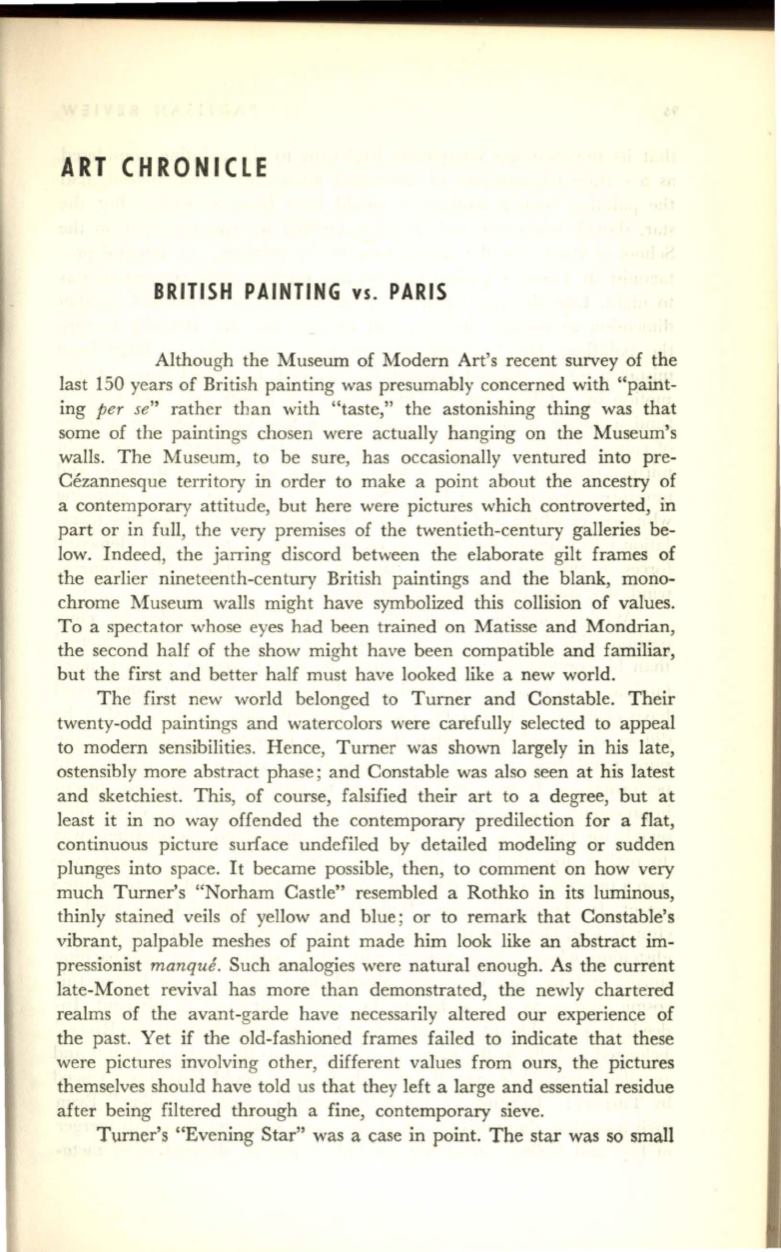
ART CHRONICLE
BRITISH PAINTING
vs.
PARIS
Although the Museum of Modern Art's recent survey of the
last 150 years of British painting was presumably concerned with "paint–
ing
per se"
rather than with "taste," the astonishing thing was that
some of the paintings chosen were actually hanging on the Museum's
walls. The Museum, to be sure, has occasionally ventured into pre–
Cezannesque territory in order to make a point about the ancestry of
a contemporary attitude, but here were pictures which controverted, in
part or in full, the very premises of the twentieth-century galleries be–
low. Indeed, the jarring discord between the elaborate gilt frames of
the earlier nineteenth-century British paintings and the blank, mono–
chrome Museum walls might have symbolized this collision of values.
To a spectator whose eyes had been trained on Matisse and Mondrian,
the second half of the show might have been compatible and familiar,
but the first and better half must have looked like a new world.
The first new world belonged to Turner and Constable. Their
twenty-odd paintings and watercolors were carefully selected to appeal
to modern sensibilities. Hence, Turner was shown largely in his late,
ostensibly more abstract phase; and Constable was also seen at his latest
and sketchiest. This, of course, falsified their art to a degree, but at
least it in no way offended the contemporary predilection for a flat,
continuous picture surface undefiled by detailed modeling or sudden
plunges into space. It became possible, then, to comment on how very
much Turner's "Norham Castle" resembled a Rothko in its luminous,
thinly stained veils of yellow and blue; or to remark that Constable's
vibrant, palpable meshes of paint made him look like an abstract
im–
pressionist
manque.
Such analogies were natural enough. As the current
late-Monet revival has more than demonstrated, the newly chartered
realms of the avant-garde have necessarily altered our experience of
the past. Yet if the old-fashioned frames failed to indicate that these
were pictures involving other, different values from ours, the pictures
themselves should have told us that they left a large and essential residue
after being filtered through a fine, contemporary sieve.
Turner's "Evening Star" was a case in point. The star was so small


